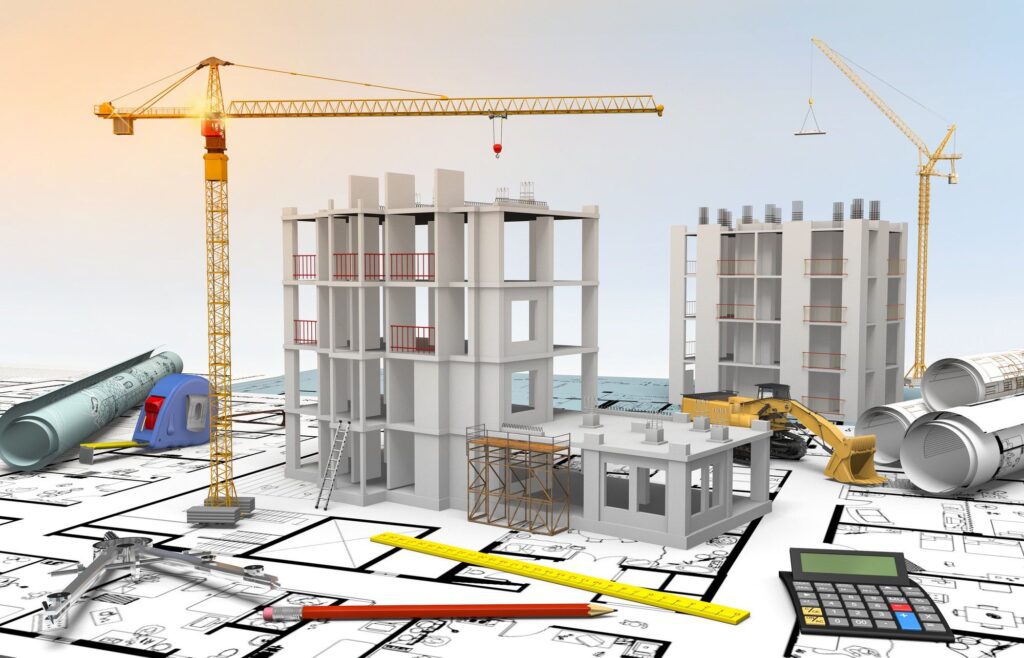Introduction
Maintaining a budget during a construction project involves more than merely reducing expenses—it hinges on precise estimating. Evaluating the costs of building construction is a vital process that establishes the financial framework for the whole project. A small mistake during the early stages can lead to considerable cost increases, delays, and even possible legal disputes.
This article will explore common mistakes in construction estimating and offer advice on how to avoid them, helping to keep your project on budget and on time.

1. Underestimating Material Costs
A frequent mistake is undervaluing materials. Costs vary due to demand, supply, and geographical factors of the US. Estimators frequently depend on obsolete databases or make assumptions.
How to Avoid It:
- Use up-to-date pricing software.
- Confirm prices with local suppliers.
- Include contingency allowances for inflation.
2. Ignoring Labor Productivity Rates
Compensation for labor encompasses more than just pay. Various teams exhibit varying productivity rates due to their skill and experience levels.
How to Prevent This:
- Modify estimates according to team efficiency.
- Consider breaks, adverse weather conditions, and time spent on training.
- Utilize past data to monitor performance.
3. Missing Scope Details
Failing to read plans and specifications thoroughly can result in missing scope items—leading to surprise costs later.
How to Avoid It:
- Do a detailed takeoff with team reviews.
- Break down tasks and cross-reference specs.
- Use checklist-based reviews to ensure accuracy.
4. Overlooking Site Conditions
Every location has distinct factors—such as soil composition, accessibility, and drainage—that can greatly affect construction expenses.
How to Avoid It:
- Perform a site inspection prior to making an estimate.
- Incorporate findings from geotechnical assessments.
- Engage with engineers at the outset.
5. Inaccurate Quantity Takeoffs
Incorrect quantity takeoffs result in inaccurate material and labor estimates.
How to Avoid It:
- Utilize dependable takeoff software.
- Verify calculations thoroughly.
- Request a second estimator to evaluate the takeoff.
6. Failing To Factor In Time-Based Costs
Time affects cost—longer timelines mean higher labor, equipment rentals, and overhead.
How to Avoid It:
- Establish achievable timelines.
- Keep in mind the effects of weather and potential permit holdups.
- Include extra time and a cushion in the estimate.
7. Excluding Overhead and Profit Margins
Some estimators focus solely on direct costs and forget to include overhead and desired profit margins.
How to Avoid It:
- Explicitly outline markups in your estimation template.
- Include indirect expenses like insurance, administrative costs, and equipment upkeep.
- Revise your pricing models every three months.
8. Failing to Update Estimates After Design Changes
Designs often evolve, but if the estimate isn’t updated accordingly, it leads to budget misalignment.
How to Avoid It:
- Monitor changes in a structured manner.
- Promptly reassess impacted items.
- Utilize change-order records.
9. Using Generic Templates Without Customization
Using a “one-size-fits-all” template doesn’t reflect project-specific details.
How to Avoid It:
- Tailor each estimate to project specifics.
- Include unique factors like zoning rules, client preferences, and location.
10. Neglecting Risk Analysis
Every construction project has risks—material shortages, design flaws, and safety issues.
How to Avoid It:
- Conduct a risk assessment during estimation.
- Allocate contingency funds for unforeseen events.
- Review similar past projects for risk trends.
Why You Should Choose All Bids Estimates
Choosing All Bids Estimates means collaborating with a team dedicated to precision, effectiveness, and your achievement. We offer comprehensive and dependable building construction estimates that assist you in maintaining your budget and timeline. With our industry knowledge and cutting-edge tools, we reduce risks and produce reliable results—each and every time.
FAQs
Q1. What makes precise construction estimating crucial?
Precise estimates guarantee that the project remains within financial limits, prevents setbacks, and fulfils client expectations.
Q2. Which software applications are useful for estimation?
Common options are PlanSwift, Bluebeam, RSMeans, and ProEst for performing takeoffs and calculating costs.
Q3. How often should I update my estimating process?
At least quarterly, or any time market conditions or project types shift significantly.
Q4. Can I outsource construction estimating?
Yes. Many companies now hire professional estimating services to ensure accuracy and save time.
Conclusion
Preventing errors in estimating for building construction is essential for maintaining the budget and ensuring project success. Every aspect, from the cost of materials to site conditions and labor efficiency, plays a significant role. By utilizing current tools, verifying information, and remaining flexible, you can steer clear of expensive unexpected issues.
Devoting time and energy to an accurate estimate results in a more seamless construction process, satisfied clients, and improved profits. Avoid letting minor errors derail your project—begin on the right foot with effective estimating.
